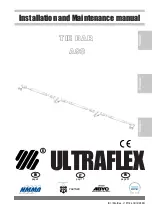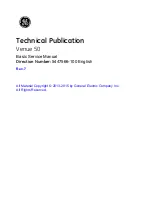
Fluorescent Proteins for PALM
The advantage of photoswitchable fluorescent proteins (PS-FPs) lies in their outstanding specificity and their small size,
which is around 2 nm. The latter feature potentially allows for high labeling densities. Among photo-switchable proteins
photoconvertable ones are the easiest to use as they - and the structure they stain – can be visualized at a different spec-
tral range before conversion. Also one can easily check transfection efficiencies and expression levels. E.g. tdEOS or
mEOS can be checked in the green spectral range, while the PALM experiment will be carried out detecting photo
-
switched EOS molecules in a more red shifted spectral band. Therefore tdEOS or its monomeric variant mEOS have
been in extensive use as they also yield reasonable photon numbers.
Figure 3
Examples of fluorescent proteins that can be used for PALM imaging
Most of these proteins are available through e.g. Addgene, Cambridge, MA 02139, USA
Recommended FP-Pairs for dual-color PALM
Pair 1: mEOS2 + Dronpa
Pair 2: Neo PA-mCherry1
Pair 3: Dronpa
If two differently stained molecules in the same sample are subjected to PALM, it is advisable to first image the higher
wavelength dye as this does not cross-talk into the shorter wavelength channel. Hence, cross-excitation of the longer
wavelength dye by the shorter wavelength and cross-emission of the shorter wavelength dye into the longer wave-
length channel are minimized. Under experimental conditions many molecules of the shorter wavelength dye are
equally activated with the 405 nm laser line, that is used for conversion / PALM imaging of the longer wavelength dye.
Therefore reversible switchable fluorophores are the preferred choice for the shorter wavelength as they can be recov
-
ered and are not irretrievably lost.
White Paper
6





























